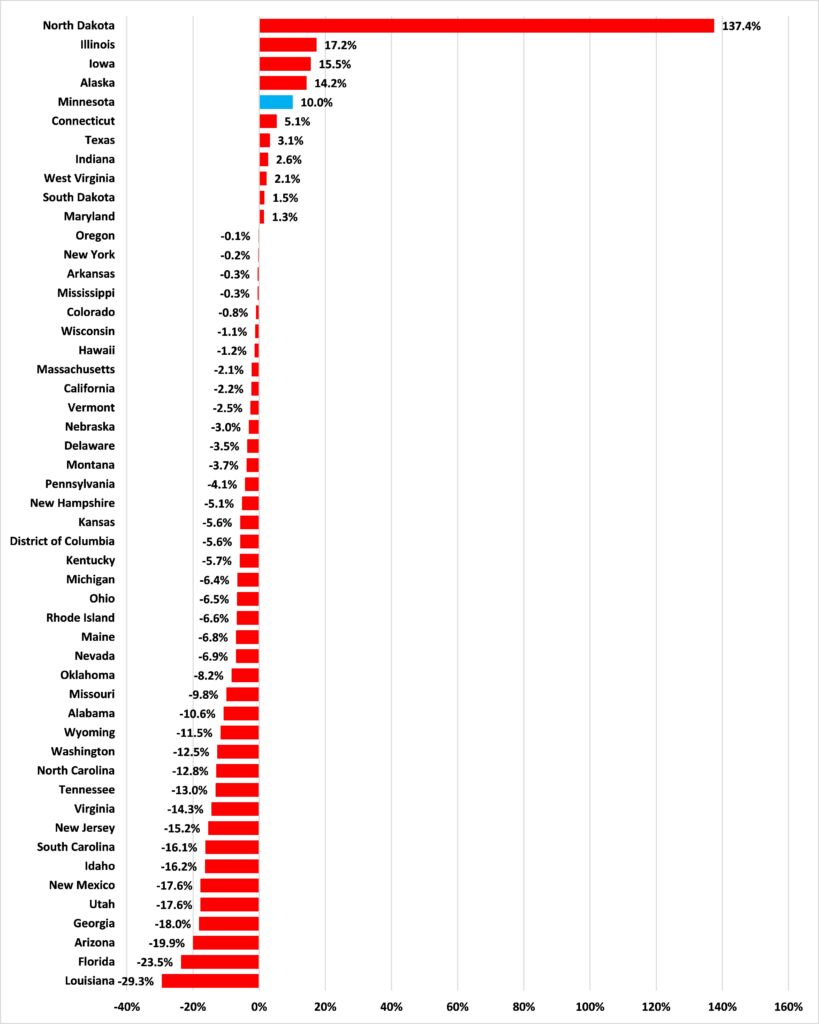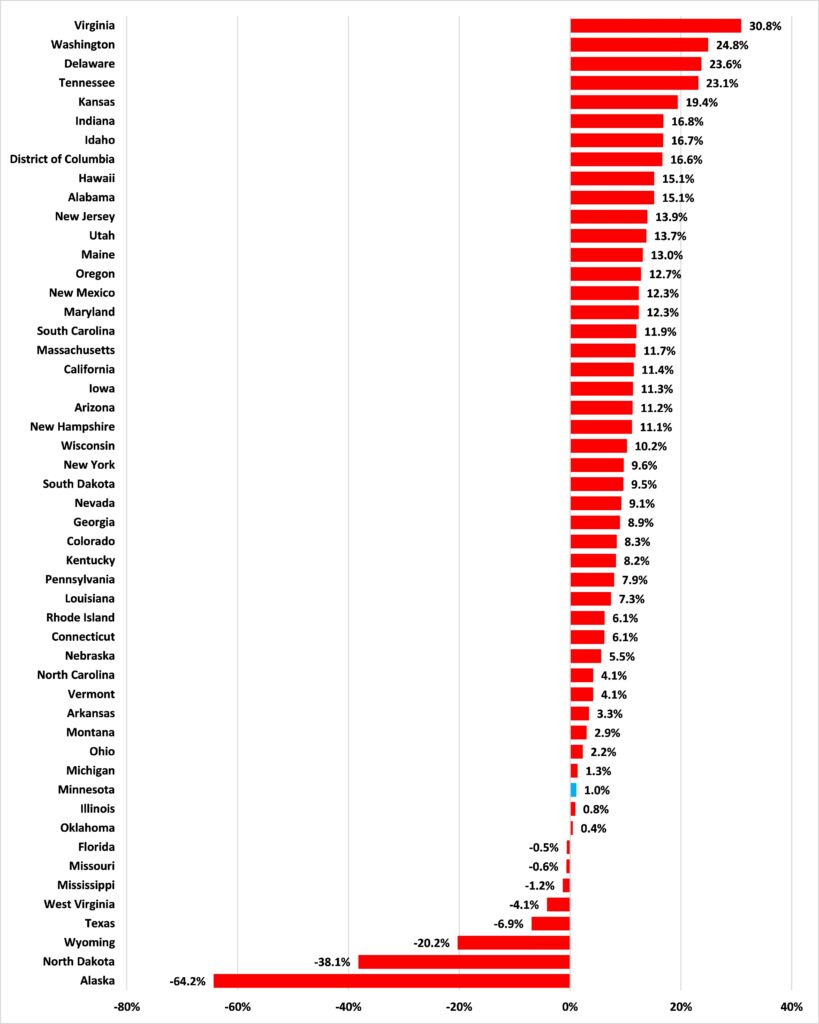After the last income tax hike, growth in Minnesota’s state tax revenues slumped
Back in 2020, I noted that the growth or otherwise in Minnesota’s state tax revenues seems to be a function of the growth or otherwise of the state’s economy rather than the movements upward or downward of its tax rates. This accounts for the remarkably stable share of tax revenues to state Gross Domestic Product (GDP) over time.
I have also noted recently that Minnesota’s economy has grown more slowly than that of the United States in every year since 2014. Given that relationship between state GDP and tax revenues, have we seen state tax revenues grow more slowly than those for other states since 2014? Yes, we have.
The Census Bureau produces an annual survey of state and local government finances. As it uses the same methodology for each state, it allows us to compare state government finances. The most recent year available is 2020. So our question is how does Minnesota’s revenue growth post-2014 compare to its revenue growth pre-2014?
Figure 1 shows the growth of total state tax revenue from 2007 to 2013 adjusted for both inflation and population for the fifty states and District of Columbia. We see that, between 2007 and 2013, Minnesota’s total, per capita, state tax revenue grew in real terms at the fifth fastest rate among the 51 jurisdictions.
Figure 1: Real growth in total, per capita state tax revenue, 2007-2013

Figure 2 shows the growth of total state tax revenue from 2014 to 2020, again adjusted for both inflation and population, for the fifty states and District of Columbia. We see that, between 2014 and 2020, Minnesota’s total, per capita, state tax revenue grew in real terms at the eleventh lowest rate among the 51 jurisdictions. This is quite a collapse.
Figure 2: Real growth in total, per capita state tax revenue, 2014-2020

Remember, in May 2013, the Minnesota legislature voted to create a new income tax rate for top earners of 9.85%, 2 percentage points above the prior top rate, which kicked in in 2014. Since that tax hike, Minnesota’s economic growth has slowed relative to the rest of the country and so has tax revenue growth.
This weekend, I said that:
Our state is about to move from the “fool around” to the “find out” stage of voting for ever higher taxes, ever higher government spending, and ever bigger government.
In many ways we’re already in it and have been for some time. From now on it will become undeniable.
Back in 2020, I argued that:
There is an important policy lesson here. The dollar amount of tax revenue seems far more likely to be a function of the size of the state’s economy than of its tax rates. This means that if you want more money to fund government services, you should look to increase the state’s GDP rather than hike its tax rates.
That remains the case.